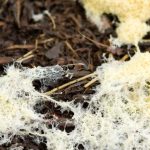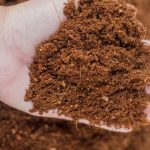To initiate the composting process in your compost tumbler effectively, follow these steps. First, maintain regular turning of the tumbler every three to five days, or even more frequently, to ensure adequate aeration, which is vital for activating the decomposition process.
Secondly, introduce absorbent materials rich in carbon to the tumbler to prevent excessive moisture build-up while facilitating faster composting. Additionally, jumpstart the process by adding manure or finished acidic compost, providing a microbial boost.
Avoid excessive mixing, as it can hinder the generation of heat, which signifies microbial activity and efficient breakdown of materials.
With proper care and attention, your compost should be ready in about six to eight weeks, thanks to the accelerated microbial action generated by optimal heat.

What Is the Role Of Compost Tumblers In Composting?
Compost tumblers are specially designed containers that accelerate the composting process by providing an ideal environment for the decomposition of organic materials.
These containers have a unique tumbling or rotating mechanism that helps aerate the compost, ensuring proper oxygen flow and moisture distribution.
This results in faster and more efficient decomposition, allowing you to produce rich, high-quality compost in a shorter period compared to traditional composting methods.
How To Choose The Right Compost Tumbler For Beginners?
When starting with composting, it’s important to choose the right compost tumbler that suits your needs and abilities. Here are some factors to consider:
- Size: Determine the amount of compost you intend to produce and ensure that the tumbler has enough capacity for your needs.
- Materials: Look for compost tumblers made from sturdy and durable materials such as recycled , plastic or metal. These materials are weather-resistant and can withstand the rigors of outdoor use.
- Tumbling mechanism: Opt for a tumbler with an easy-to-use tumbling mechanism. Consider whether you prefer a hand-cranked or a rolling tumbler based on your physical capabilities and convenience.
- Ventilation and drainage: Ensure that the compost tumbler has proper ventilation and drainage features to allow the compost to breathe and prevent excess moisture buildup.
- Price: Set a budget and choose a compost tumbler within your price range. Remember that higher-priced options may offer additional features or better durability.
Choose the right compost tumbler and start composting. Produce nutrient-rich compost to enhance your garden and reduce your environmental footprint.

How To Set Up Your Compost Tumbler?
Starting a compost tumbler is a great way to turn your kitchen scraps and yard waste into nutrient-rich soil that can benefit your garden.
Let’s dive into the process of setting up your compost tumbler step by step. By following this guideline, you’ll be well on your way to creating your organic compost that will nourish your plants and help reduce waste.
Finding The Perfect Location For Your Tumbler
A rock tumbler must be positioned in a safe and enclosed area, such as a closet, basement, garage, or shed, ensuring that it remains inaccessible to pets and young children.
The chosen location should also be easily accessible for regular check-ins. Scenic spots to gather rocks for tumbling, such as gravel roads, can provide a variety of interesting specimens, including smaller rocks suitable for tumbling.
Excessive use of larger rocks in the tumbler may hinder the tumbling process, so it’s important to include appropriately sized rocks.
Here are a few factors to keep in mind:
- Choose a level surface: Ensure that the area where you plan to place the tumbler is level. This will prevent any unnecessary strain on the tumbler and make it easier to rotate.
- Provide easy access: Select a location that is easily accessible to you. You’ll want to add kitchen scraps and monitor the progress of your compost regularly, so having the tumbler in a convenient spot will make your composting experience more enjoyable.
- Avoid direct sunlight: While some sunlight is beneficial, excessive heat can dry out the compost and slow down the decomposition process. Find a place that offers partial shade to maintain optimal moisture levels.
Preparing The Composting Materials
Now that you have chosen the perfect location for your compost tumbler, it’s time to gather your composting materials. Here’s a list of the essentials:
| Green Materials (Nitrogen-rich) | Brown Materials (Carbon-rich) |
|---|---|
| Vegetable scraps | Dry leaves |
| Fruit peels | Straw |
| Coffee grounds | Shredded newspaper |
N.B: It’s important to chop or shred larger materials into smaller pieces to speed up the decomposition process. Balancing green and brown materials is crucial for effective composting. It’s important to chop or shred larger materials into smaller pieces to speed up the decomposition process. Balancing green and brown materials is crucial for effective composting.
Adding The Right Balance Of Green And Brown Materials
Maintaining a balanced compost ratio is key to successful composting. A common and straightforward guideline is the 1-to-1 ratio, where you aim for an equal mix of green compost materials (rich in nitrogen) and brown compost materials (rich in carbon), making it a 50% green and 50% brown composition.
While some may suggest slightly different ratios, many composters, including us, find the 1-to-1 balance effective and hassle-free. This equilibrium keeps both beneficial bacteria and fungi content, fostering a healthy composting environment.
Ultimately, the key is to monitor your compost’s moisture, aeration, and temperature to ensure the decomposition process proceeds smoothly, regardless of the specific green-to-brown ratio you choose.
Achieving the ideal balance of green and brown materials in your compost tumbler is crucial for successful decomposition. Green materials provide nitrogen, while brown materials provide carbon. The following guidelines will help you maintain the perfect balance:
- Add approximately two-thirds brown materials to one-third green materials. This ratio ensures proper decomposition while preventing the compost from becoming too dry or too wet.
- Layer the materials: Start with a layer of brown materials, followed by a layer of green materials. Repeat this process until you have added an adequate amount of composting materials to your tumbler.
- Maintain moisture levels: Your compost should have a damp but not overly wet consistency. If it becomes too dry, add water; if it becomes too wet, add more dry brown materials.

How Can You Activate The Composting Process?
Starting a compost tumbler requires activating the composting process. This involves adding a compost starter/accelerator, monitoring temperature and moisture levels, and turning the tumbler for aeration and mixing.
By following these steps, you can jumpstart the decomposition process and convert your kitchen scraps and yard waste into high-quality compost for your gardens.
Adding Compost Starter Or Accelerator
Adding a compost starter or accelerator to your compost tumbler can help speed up the decomposition process. This organic material contains beneficial microorganisms that help break down the organic matter into compost more quickly. Y
ou can find compost starters or accelerators at your local garden center or make your own using ingredients such as manure, garden soil, or decomposed leaves. Simply follow the instructions on the product’s packaging or mix your homemade accelerator with the compost materials in the tumbler.
Monitoring The Temperature And Moisture Levels
Monitoring the temperature and moisture levels in your compost tumbler is crucial for successful composting. The ideal temperature for composting ranges between 130 to 160 degrees Fahrenheit (55 to 70 degrees Celsius).
To achieve and maintain this temperature, ensure that your compost tumbler is placed in a sunny spot. If the temperature drops below the desired range, you can insulate the tumbler with blankets or add more nitrogen-rich materials, such as fresh grass clippings.
Additionally, it’s important to keep an eye on the moisture levels of your compost. The moisture content should be similar to that of a wrung-out sponge.
If the compost is too dry, add water using a watering can or hose with a gentle spray. On the other hand, if the compost is too wet, add dry carbon-rich materials like dried leaves or shredded newspaper to absorb the excess moisture.
Turning the Tumbler For Aeration And Mixing
Turning the compost tumbler regularly is crucial for aeration and mixing. This process helps to introduce oxygen into the pile, promoting the growth of aerobic microorganisms that thrive in oxygen-rich environments.
To ensure proper aeration and mixing, turn your compost tumbler at least once every two to three days. As you turn the tumbler, you’ll notice that the materials inside mix, enhancing the breakdown process.
When turning the tumbler, be sure to mix the outer and inner layers thoroughly. Pay attention to the moisture levels and temperature as mentioned earlier, and make any necessary adjustments as you turn the compost.
Troubleshooting Common Compost Tumbler Issues
A compost tumbler is a great way to create nutrient-rich compost for your garden. However, like any gardening method, it can sometimes come with its own set of challenges.
Identifying And Resolving Foul Odors
One of the most common issues that can arise when using a compost tumbler is the presence of foul odors. These unpleasant smells can be indicative of anaerobic conditions or improper composting practices. Here are some steps you can take to identify and resolve foul odors in your compost tumbler:
- Check the moisture level: Excessive moisture can create a slimy and smelly compost. Ensure that your compost mixture is adequately moist, similar to a wrung-out sponge. If it is too wet, add dry organic materials like dried leaves or shredded newspaper to balance the moisture content.
- Aerate the compost: Foul odors can also be a result of inadequate oxygen in the compost. Turn the tumbler regularly to introduce fresh air into the mixture. This will help to promote aerobic decomposition, reducing the likelihood of unpleasant smells.
- Add carbon-rich materials: Foul odors are often associated with an imbalance of nitrogen and carbon in the compost. If your compost contains a high proportion of nitrogen-rich materials, such as kitchen scraps or fresh grass clippings, add carbon-rich materials like dry leaves or straw to restore balance.
- Avoid adding problematic items: Certain food scraps, such as meats, dairy products, and oily foods, can contribute to foul odors and attract pests. Avoid adding these items to your compost tumbler to prevent odor-related issues.
How to Solve And Addressing Slow Decomposition Or Lack Of Heat?
If you notice that your compost is decomposing too slowly or lacks the necessary heat, it may indicate a problem with the composting process. Here are some steps to address these issues:
Optimize the carbon-to-nitrogen ratio: A compost pile with an imbalanced carbon-to-nitrogen ratio can result in slow decomposition. Ensure that you have a good mix of carbon-rich materials, such as leaves, straw, or shredded newspaper, and nitrogen-rich materials, such as kitchen scraps or green garden waste.
Shred or chop materials: Large or bulky materials can take longer to break down. To speed up the decomposition process, shred or chop materials into smaller pieces before adding them to the compost tumbler. This will increase the surface area available for microbial activity.
Monitor the moisture levels: Moisture is crucial for decomposition to occur. If your compost lacks moisture, it can slow down the decomposition process. Conversely, excessive moisture can create anaerobic conditions. Regularly check the moisture levels and adjust accordingly by watering or adding dry materials.
Consider adding a compost activator: If your compost is still slow to decompose, you can introduce a compost activator, such as finished compost or commercial compost accelerators. These additives contain beneficial microorganisms that can help speed up the decomposition process.

How To Deal With Pests And Insects in Compost Tumbler?
Pests and insects can sometimes find their way into your compost tumbler, causing disruptions and potential contamination. Here’s what you can do to address this issue:
Secure the compost tumbler: Ensure that your compost tumbler is properly sealed to deter pests from entering. Check for any gaps, cracks, or holes that may serve as entry points and repair them as needed.
Avoid attracting pests: Certain types of food waste, such as meat, dairy, or oily foods, can attract unwanted pests. Minimize the addition of these items to your compost and instead focus on adding fruit and vegetable scraps, coffee grounds, or yard waste.
Add a layer of browns: Creating a layer of carbon-rich “browns” like dry leaves or shredded paper on top of the compost can help deter pests. They do not find these materials as appealing as greens and are less likely to be attracted to your compost tumbler.
Avoid adding diseased or pest-infested plants: Diseased or pest-infested plants can introduce harmful pathogens or insects to your compost. Avoid adding these materials, as they can cause problems both within the composting process and potentially spread to your garden.

How To Harvesting And Using Your Compost?
Before you begin harvesting your compost, it’s crucial to ensure that it has fully decomposed and transformed into a rich, dark material that is odorless and free from any recognizable organic matter. Here are a few signs to look out for to know if your compost is ready:
- Uniform appearance: The compost should have a consistent texture and color throughout.
- Earth-like smell: It should possess a pleasant, earthy odor, indicating the completion of the decomposition process.
- No traces of original materials: There should be no visible remains of the items you initially added to the compost.
- Warmth dissipates: If your compost was generating heat during the decomposition process, it should have cooled down completely.
Harvesting And Storing The Finished Compost
Now that you’ve determined that your compost is ready, it’s time to harvest and store it properly. Follow these steps to ensure efficient and clean harvesting:
Stop adding new materials: A few weeks before you plan to harvest, refrain from adding fresh scraps or waste to the compost bin.
Prepare a collection area: Place a tarp or bucket near your compost tumbler to catch the harvested compost.
Rotate the tumbler: Begin turning the compost tumbler regularly to loosen and aerate the contents. This will help facilitate the separation of compost from any remaining organic matter.
Harvest the compost: Remove the compost from the tumbler and transfer it to the collection area. If there are any larger, partially decomposed materials, set them aside to be added back to the tumbler for further decomposition.
Store the compost: Transfer the harvested compost to a covered container or bin. Ensure it is stored in a cool, dry place to maintain its quality until you are ready to use it.
How Can You Utilize The Compost In Your Garden Or Plants?
Once you’ve successfully harvested and stored your compost, it’s time to reap its benefits in your garden or for your plants. There are several effective ways to make the most of your compost.
Firstly, as a soil amendment, blend it with your existing soil to enrich fertility, improve water retention, and boost nutrient levels. A recommended ratio is one part compost to three parts soil. You can also employ compost as a top dressing by spreading a layer on garden beds or around plant bases.
This natural mulch helps retain moisture and suppress weeds. Additionally, when planting seedlings, mix compost into the backfill soil to nurture young plants and encourage robust root development.
Another method is to create compost tea: combine compost with water in a 1:5 ratio and let it steep for a few days.
The resulting liquid serves as a natural fertilizer, enriching the soil around your plants when poured directly onto it. These diverse applications allow you to maximize the benefits of your compost in your gardening endeavors.

Credit: www.simpleecology.com
Frequently Asked Questions On How To Start A Compost Tumbler
How Do I Start A Compost Tumbler?
To start a compost tumbler, begin by collecting organic kitchen and garden waste, such as fruit peels, coffee grounds, and grass clippings. Add these materials to the tumbler, making sure to maintain a balance of greens and browns. Turn the tumbler every few days to aerate the compost and speed up the decomposition process.
What Can I Compost In A Tumbler?
You can compost a variety of materials in a tumbler, including fruit and vegetable scraps, coffee grounds, tea leaves, eggshells, grass clippings, dried leaves, and small amounts of paper and cardboard. Avoid adding meat, dairy products, oily food waste, and pet waste as they may attract pests or cause odor issues.
How Long Does It Take For Compost To Be Ready In A Tumbler?
The time it takes for compost to be ready in a tumbler can vary depending on various factors such as the materials used, the balance of greens and browns, and the frequency of turning. On average, it can take anywhere from 2 to 6 months.
Conclusion
Starting a compost tumbler can be a rewarding and environmentally friendly way to manage your organic waste. By following simple steps such as choosing the right location, adding the right materials, and regularly turning the tumbler, you can create nutrient-rich compost for your garden.
Remember to maintain the right balance of green and brown materials, monitor moisture levels, and be patient as it takes time for the compost to fully break down. With a little effort, you’ll be on your way to reducing waste and creating a healthier garden ecosystem.

I am a graduate of Bangladesh Agricultural University, where I delved into various agricultural disciplines, equipping me with a profound understanding of agriculture. Beyond academics, I have hands-on experience in gardening and crop cultivation. My passion is to embrace sustainable farming and horticulture. With a BSc in Agriculture, I am dedicated to promoting environmentally conscious and efficient agrarian practices.
Bachelor of Science (BSc) in Agriculture (Hons.)
Master of Science. (Sustainable Agriculture & Food Security ) (MS)
Bangladesh Agricultural University




